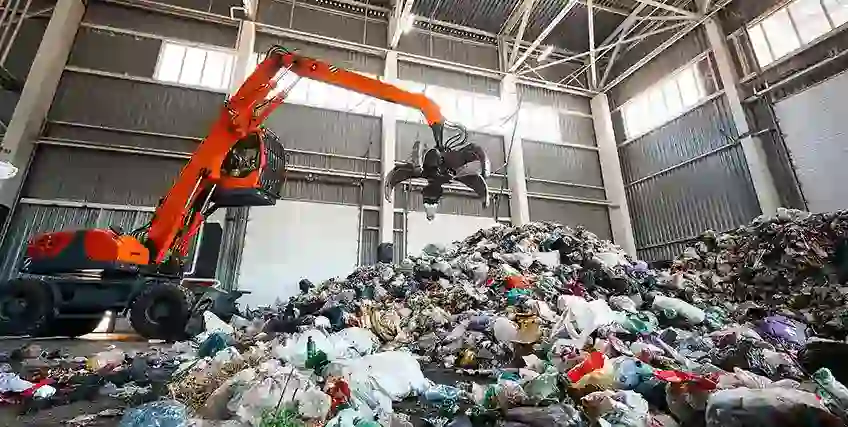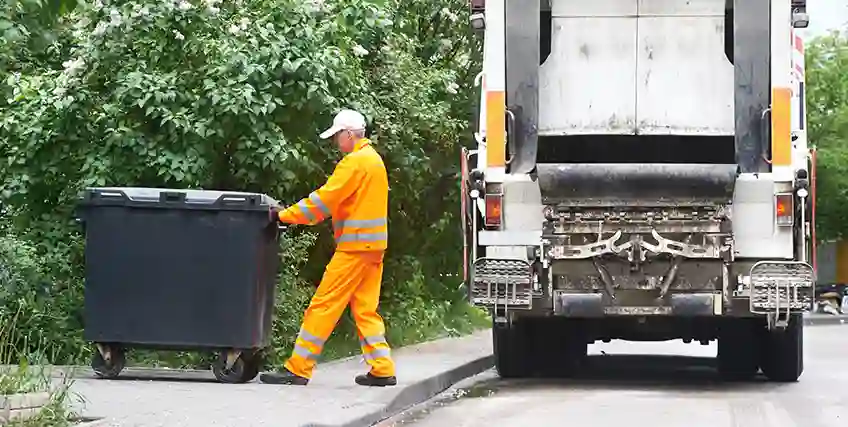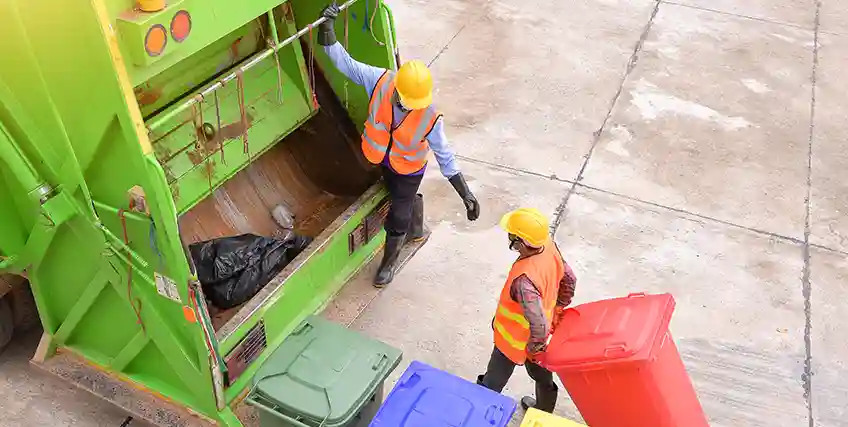Best Business Loans for Waste Equipment Financing and Disposal Services
June 02, 2025 | Last Updated on: June 02, 2025

Managing waste efficiently is critical for both businesses and municipalities. Whether it's hauling services, recycling operations, or landfill management, waste management companies depend heavily on specialized equipment such as compactors, balers, trucks, shredders, and sorting machines. However, purchasing or upgrading waste equipment often involves a significant financial investment.
Fortunately, there are several waste equipment financing options available that can make acquiring waste equipment more feasible. The right financing solution can help a company conserve capital, preserve credit lines, and upgrade to the latest technologies without large upfront costs. This article explores the top options for waste and recycling equipment financing and provides insights into how businesses can make informed decisions.
1. Equipment Leasing
Overview
Equipment leasing is a common method of financing where the business rents the equipment for a specific period in exchange for fixed monthly payments. At the end of the lease term, the lessee may have options to purchase, renew, or return the equipment.
Types of Leases
- Operating Lease: Typically used when the business doesn’t intend to own the equipment. Payments are usually lower, and the equipment is returned at the end of the lease.
- Capital Lease (Finance Lease): Used when the business intends to purchase the equipment at the end of the lease term. Payments tend to be higher, but the equipment appears as an asset on the balance sheet.
Pros
- Low upfront costs
- Predictable monthly payments
- Possible tax benefits (leases may be deductible as operating expenses)
- Keeps equipment up to date
Cons
- Total cost over time may exceed the purchase price
- Lease terms can be restrictive
- No ownership unless a buyout option is exercised
Best For:
- Companies with limited capital or those needing equipment upgrades frequently
2. Equipment Loans
Overview
An equipment loan provides a lump sum that the borrower uses to purchase waste equipment. The borrower repays the waste equipment financing in monthly installments with interest over a fixed term. The equipment typically serves as collateral.
Key Features
- Fixed or variable interest rates
- Terms from 1 to 7 years, depending on the lender and equipment lifespan
- Down payments typically range from 10% to 20%
Pros
- Immediate ownership of equipment
- Interest may be tax-deductible
- Builds business credit
- Equipment may be depreciated on taxes
Cons
- Requires a strong credit profile
- May require a down payment
- Depreciation risk over time
Best For:
- Businesses with solid credit and a preference for ownership
3. Small Business Administration (SBA) Loans
Overview
SBA loans are partially guaranteed by the U.S. government, making them attractive to lenders and accessible to small businesses. SBA 7(a) and CDC/504 loans can be used for waste equipment financing.
SBA 7(a) Loan
- Loan amounts up to $5 million
- Terms up to 10 years for equipment
- Competitive interest rates
SBA CDC/504 Loan
- Specifically for purchasing fixed assets like equipment or real estate
- Structured with 50% bank loan, 40% CDC (Certified Development Company), and 10% borrower contribution
Pros
- Lower interest rates than traditional loans
- Longer repayment terms
- Lower down payments
- Government backing increases approval odds
Cons
- Lengthy application process
- Strict eligibility requirements
- Personal guarantees may be required
Best For:
- Small businesses that meet SBA qualifications and want favorable terms
4. Vendor Waste Equipment Financing
Overview
Some equipment manufacturers or dealers offer in-house financing or partner with third-party lenders to help customers finance on machinery. This option simplifies the buying and waste equipment financing process.
How It Works
- Vehicle and equipment finance can happen directly through the seller
- May include promotional offers like 0% interest for an introductory period
- Flexible packages often customized for the waste industry
Pros
- One-stop-shop for equipment and financing
- Often quicker approval process
- May offer equipment-specific payment structures
Cons
- Limited lender options
- Terms may be less competitive than independent financing
Best For:
- Buyers seeking a convenient and fast financing option tied to specific equipment
5. Bank Loans and Lines of Credit
Overview
Traditional banks offer both term loans and lines of credit that can be used for purchasing waste equipment.
Bank Term Loans
- Fixed lump sum with regular repayments
- Can be secured or unsecured
- Competitive rates for qualified borrowers
Lines of Credit
- Flexible access to funds up to a set limit
- Only pay interest on the amount used
- Useful for multiple or recurring equipment purchases
Pros
- Established relationship with a local bank may ease approval
- Flexible use of funds
- Lower interest rates for well-qualified borrowers
Cons
- Strict qualification requirements
- Longer processing times
- May require extensive documentation
Best For:
- Established businesses with strong financials and ongoing equipment needs
6. Municipal Leasing and Tax-Exempt Financing
Overview
For public-sector waste management organizations, tax-exempt municipal leases offer attractive waste equipment financing options. These allow municipalities to acquire equipment with payments that are exempt from federal income tax.
Features
- Payments spread over the equipment’s useful life
- Non-appropriation clause protects the public entity
- Often lower rates due to tax-exempt status
Pros
- Budget-friendly payment structure
- No large capital outlay
- Preserves public funds for other uses
Cons
- Limited to government entities or nonprofits
- Requires compliance with municipal regulations
Best For:
- Cities, counties, and public utilities managing waste services
7. Alternative and Online Lenders
Overview
Online lenders and fintech companies have become popular waste equipment financing sources due to their fast approvals and flexible underwriting standards.
Key Features
- Loans, lines of credit, or equipment financing
- Faster approval
- Less stringent credit requirements
Pros
- Fast and convenient
- Ideal for businesses with poor or limited credit history
- Variety of loan types available
Cons
- Higher interest rates
- Shorter repayment terms
- Risk of predatory lenders—due diligence is necessary
Best For:
- Businesses that need quick funding or don’t qualify for traditional loans
8. Government and Green Energy Grants
Overview
Certain waste equipment financing may qualify for federal, state, or local grants, especially if it improves environmental outcomes. These funds do not need to be repaid.
Examples
- U.S. Department of Energy and EPA grants for recycling and sustainable waste equipment
- State-level clean energy programs for electric or hybrid refuse trucks
Pros
- no repayment
- Encourages adoption of eco-friendly technology
- Can be combined with other financing
Cons
- Highly competitive
- Detailed applications with long review periods
- May require reporting and compliance
Best For:
- Waste management firms investing in green or innovative equipment
9. Sale-Leaseback Financing
Overview
In a sale-leaseback, a company sells its owned equipment to a finance company and leases it back for regular payments. This unlocks capital tied up in equipment and can be an option for waste equipment financing.
Benefits
- Quick cash infusion
- Continued use of equipment
- Useful for liquidity without new borrowing
Risks
- Loss of asset ownership
- Long-term cost may be higher
Best For:
- Companies needing working capital but with valuable equipment
Factors to Consider When Choosing a Waste Equipment Financing Option
- Total Cost of Ownership: Compare the long-term costs of leasing vs. buying.
- Cash Flow: Consider how much monthly payments will impact your business.
- Tax Benefits: Depreciation, Section 179 deductions, and lease deductibility can influence your decision.
- Equipment Lifespan: For long-life assets, ownership may be preferable.
- Business Creditworthiness: Your credit score affects eligibility and terms.
- Urgency: Some lenders can fund equipment purchases much faster than others.
Final Thoughts on Waste Equipment Financing
Investing in waste equipment is essential for staying competitive, meeting regulatory standards, and improving operational efficiency. With multiple financing options available, businesses can find the right fit based on their financial profile, strategic goals, and equipment needs. Whether it's leasing for flexibility, securing waste equipment financing for ownership, or tapping into green energy grants, financing can empower waste management companies to grow sustainably.
Before deciding, it’s crucial to:
- Evaluate your budget and credit standing
- Consult with financial advisors
- Compare offers from multiple lenders
- Read the fine print to avoid hidden fees or unfavorable terms
With thoughtful planning and the right waste equipment financing partner, your waste management business can access the equipment needed to operate efficiently and meet future challenges head-on.
FAQs About Waste Equipment Financing
Are there government grants for waste equipment financing?
Certain waste equipment financing may qualify for federal, state, or local grants, especially if it improves environmental outcomes. What is notable about this finance on machinery is that it does not need to be repaid.
Are there traditional bank loans for waste equipment financing?
Traditional banks offer both term loans and lines of credit that can be used for purchasing waste equipment.
What is sales-leaseback financing?
A sale-leaseback is when a company sells its owned equipment to a finance company and leases it back for regular payments. This unlocks capital tied up in equipment and can be an option for waste equipment financing.
Are there equipment loans for waste equipment?
There are equipment loans which provide a lump sum that the borrower uses to purchase waste equipment. The borrower repays the waste equipment financing in monthly installments with interest over a fixed term. The equipment typically serves as collateral.
What is an operating lease?
Operating leases are typically used when the business doesn’t intend to own the equipment. Payments are usually lower, and the equipment is returned at the end of the lease.




